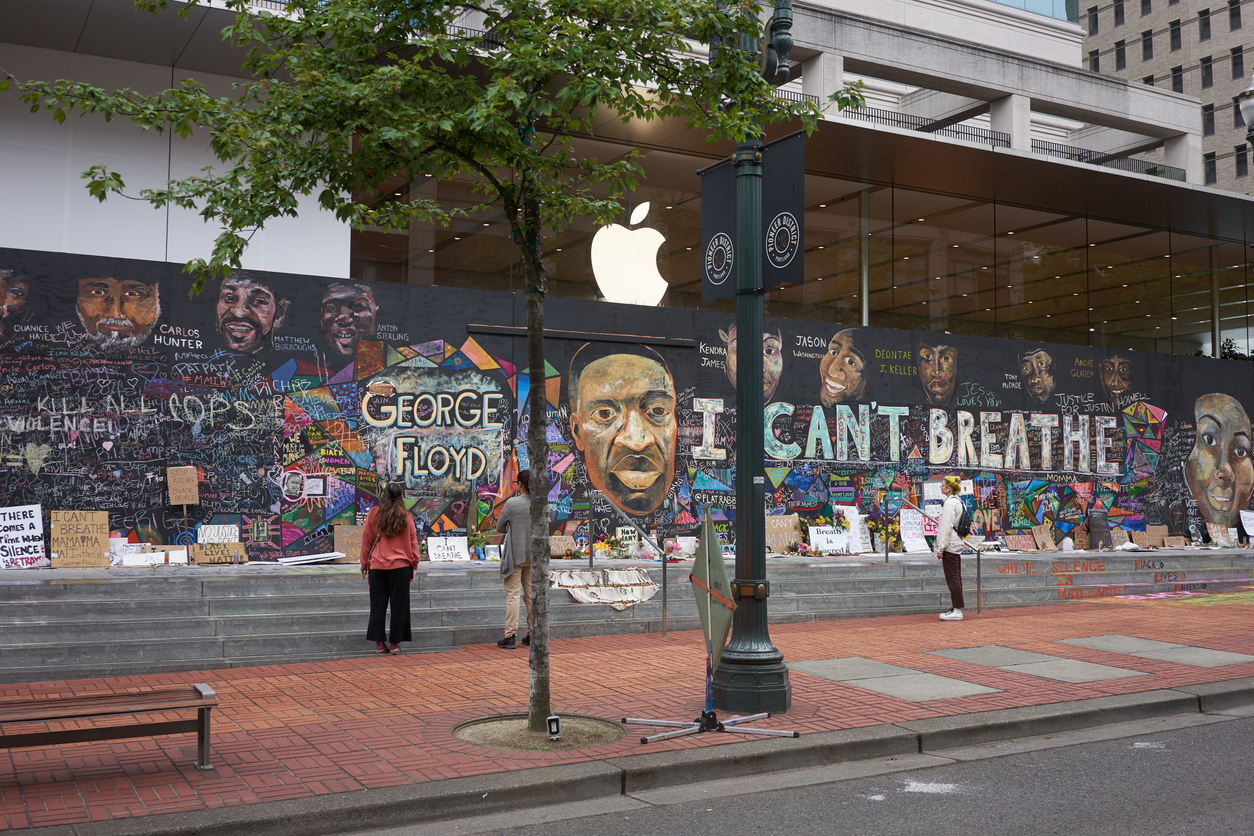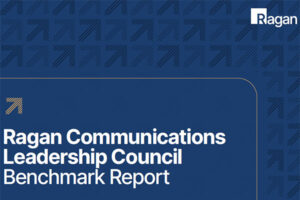Rethinking intersectional DE&I comms on the anniversary of George Floyd’s murder
Strategies and methodologies for facilitating inclusive conversations with a tangible impact.

As we approach the fourth anniversary of the murder of George Floyd on May 25th, those working to continue facilitating meaningful, anti-racist discourse among employees from different backgrounds must also navigate how to communicate during employee and student protests around the war in Gaza.
These issues are a reminder that no group is a monolith, and that many of the diversity, equity and inclusion (DE&I) initiatives launched amid the rise of the Black Lives Matter movement were not embedded across functions or fortified with the budget and oversight to make a strategic, lasting impact on the business or the culture.
With so many issues that matter to employees happening at once, it’s high time to consider the impact and strategy behind our DE&I comms efforts.
At its most effective, DE&I comms are intersectional and aim to use words and messaging that acknowledge the specific lived experiences of all stakeholder groups. What we say matters greatly, but it’s what we do that resonates during a time in which many organizations are pulling back on DE&I.
This presents an opportunity to embrace the principles of inclusion that keep your internal culture vibrant and thriving.
Here’s how several comms leaders are focusing on mission, intentionality and mindful facilitation of employee resource groups (ERGs) to keep the work going.
Communicating with intentionality
Communicating about your DE&I efforts begins with committing to an intentional message. In that way, both internal and external stakeholders will get the sense that you’re serious about backing up your words with action.
According to Valerie Rochester, chief health equity officer at CHC: Creating Healthier Communities, this process begins by taking great care in word choices.
“We need to start from the fundamental premise that language matters,” she said. For us to embrace and practice intersectional DE&I, we must intentionally choose words that inspire and uplift everyone around us and within our organizations.”
She added a people-first mindset can help communicators best reach their audiences.
“It’s imperative to use language that celebrates individuals’ strengths rather than dwelling on their limitations and prioritizes their unique experiences over reductive labels and generalizations,” Rochester said. “Even though it may seem like a small change, using person-centered and affirming language can revolutionize an entire organization’s communication dynamics and most importantly ensure that individuals feel seen, heard and valued.”
Understanding the Ladder of Inference
Because many of the DE&I programs that cropped up after the murder of George Floyd were not designed with intersectionality in mind, several almost became PR exercises for brands that didn’t consider how every underrepresented group contains multitudes of identities and lives experiences across different diasporas, different religions, different cultures, and different identities within it. We’re seeing that play out now, and a focus on shared humanity makes room for that intersectionality to exist.
This begs the question of how managers can be prepared to participate in such tricky conversations with their direct reports. According to Mary Frances-Winters and Mareisha Reese, authors of “We Can’t Talk About That at Work,” understanding a concept called the “Ladder of Inference” can explain how managers can address their own bias and reluctance to become better facilitators of difficult dialogue.
“The Ladder of Inference is really the idea that we have to make sense of situations and how our thoughts and beliefs and actions can shape the outcomes of things,” said Reese.
“It goes back to shared meaning. We might all have access to the same pool of data or amount of data. But because of my limited experience, because of my bias or my worldview, and depending on where I am on the continuum, the way I make sense of that data and what I deem to be important data may be different. The Ladder of Inference helps leaders first recognize they have biases that may come into play.”
This underscores how important transparency and vulnerability are for managers working with their direct reports. “Just because I’m senior to you doesn’t mean that I have more knowledge than you about this situation,” Reese continued. “We all bring biases to the table, and we all have work and learning to do. It’s helpful for managers to name that.”
Taping interfaith ERGs to help employees navigate polarizing and painful topics
In times when your workforce can feel bitterly divided, activating an interfaith ERG can provide a safe, structured forum for employees from under-represented backgrounds to come together, said Sumreen Ahmad, global change management lead at Accenture,
Communicators play an outsized role in ensuring this happens across all levels of the business to create shared accountability for where individual behaviors and the organization’s core values meet.
“With the rising antisemitism and Islamophobia being felt stateside, the faith and interfaith specific ERGs ultimately have the opportunity to create spaces and navigate discussions that allow for acknowledging the individual pain and impact – while anchoring back to the stated firm value statements shared by leadership,” Ahmad said.
ERGs are most effective when cut across functions, however, and proving that they can drive functions like HR to take action. “ERGs can advocate for employees’ safety and well-being by working within the HR structures to secure the additional mental health support and/or time away for impacted communities that might not otherwise be heard by individuals,” Ahmad added.
How transparency creates accountability
Empowering ERGs to have difficult conversations starts by resisting the urge to stay silent, which Ahmad believes damages transparency, and ultimately trust, creating more polarization.
“Rather, there needs to be a clear alignment on the scope, tone and audience that demonstrates an organization’s commitment to its people as the utmost priority,” she added.
Ahmad shared her approach for cascading this practice down through leaders, to comms and ultimately to ERGs:
- “Starting with the C-Suite top-down, I believe there needs to be an intentional inward focus on establishing the right environment and culture (as defined by mindsets and behaviors) while doubling down on the core values of the organization (e.g respect for the individual, integrity, standing against all forms of hate, etc) necessary to recast the conversation around internal impacts to our people (vs. the broader external discourse).”
- “Comms leaders (in congruence with the top level) can leverage the ERG communities to proactively get a pulse check on words, tone and messages to pre-emptively understand sensitivities. Specific to the current war in Gaza, it is also key to recognize that the emotional impact of this situation extends far beyond people with direct, personal connections to those in the region (and arguably should not be framed) through the faith lens, rather must recognize the various identities (e.g Middle East North Africa and Refugee communities) to be representative of the human side.”
- “Finally, ERGs can build on the written messages by hosting ‘safe spaces’ with smaller groups to allow individuals to share their personal lived experiences with those facilitating being intentional about keeping focus on human impact, independent of the politics. Top-level leadership visibility in these discussions may be helpful (in a listening capacity) may be important, but not always necessary.”
Ahmad spoke more about the importance of ERGs in divided times during our conversation during Ragan’s Employee Communications and Culture Conference last month:
Throughout this process, it’s crucial that boundaries, planning and structure don’t put added stress on a marginalized group to work on the business terms.
“Let’s go back to George Floyd’s murder, we have that anniversary coming up,” said Reese. “Not expecting those of the identifying group, Black people, to have to be a part of that conversation. They may not want to be in the conversation. Don’t try to tap those with the lived experience for whatever conversation you may want to have and expect them to ‘teach’ or to share their experience.”
Instead, Reese and Winters focus on dialogues because they make space for those most impacted to have a conversation within their own ERG, their own community, without the expectation or burden of having to teach.
“It’s recognizing not to expect everyone to engage in the conversation, especially if they don’t want to,” Reese added.
Other boundaries and rules of engagement can help facilitators give people an out when they do feel uncomfortable.
“If somebody says something that I feel offended by, you know, there’s the ‘ouch’ method and I can say ‘that was an ouch for me,’” said Winters. “Before you set up these conversations, it’s really important to have those norms agreed upon.”
Tying it back to the mission
If your efforts at creating intersectional DE&I are going to succeed, they need to lean into your organization’s established mission and values.
Kevin Clayton, senior vice president and head of social equity for the Cleveland Cavaliers said that true intersectionality in DE&I work needs to include all parts of the organization and multiple communities.
“Intersectionality should start at the beginning when you’re developing your plan,” he said.
Clayton added that DE&I efforts shouldn’t focus on one subset of the population, but should instead seek to ground itself in the last letter of the acronym, inclusion.
“When you’re developing a plan, draw it up to be inclusive of everyone,” he said. “Otherwise you risk the current assault on DE&I programs due to a perception of one-sidedness.”
Before facilitating a conversation (or an ERG), it’s important that leaders understand the difference between preparation and readiness—and that they are not the same thing.
“Preparation is, where are we going to have this conversation?” said Winters. “Tempers are flaring emotions are high. How, when, and under what conditions is it okay to have some people who are virtual and some people who are in person? We don’t recommend that these kinds of conversations happen spontaneously without that preparation. It shouldn’t be watercooler conversations.”
Considering this before having a conversation is the best way to ensure psychological safety.
“These types of gatherings can be ineffective without preparation,” Winters continued.
“After George Floyd, we noticed that a lot of leaders were having these spontaneous meetings with employees and ‘We just want to open a space for you to be honest and open …’ Are people going to feel psychologically safe? Is this something that we have to do like right now? Or can we let the emotions come down a little bit and let people know that we’re going to have this session on a particular day? “
Readiness, in contrast, is more about the knowledge level that a leader has on an issue and that the’ve done their homework. This should include knowing what your biases and triggers are.
Just as with any type of communication, your DE&I comms should be carefully crafted to match the tone of your organization. That means taking a holistic comms approach to your DE&I comms that involves lots of listening and advising leaders about your findings.
“DE&I is a social issue as well as a business imperative,” said Sukhi Sahni, educator and senior comms executive.
“For communicators focused on this work, it’s more critical than ever to stay on top of the issues, leverage data and insights to anticipate future issues and to know when to respond and counsel senior leaders to be transparent and authentic with their storytelling.”
Sean Devlin is an editor at Ragan Communications. In his spare time he enjoys Philly sports and hosting trivia.
Justin Joffe is the editorial director and editor-in-chief at Ragan Communications where he oversees the editorial strategy for Ragan across brands and products.









